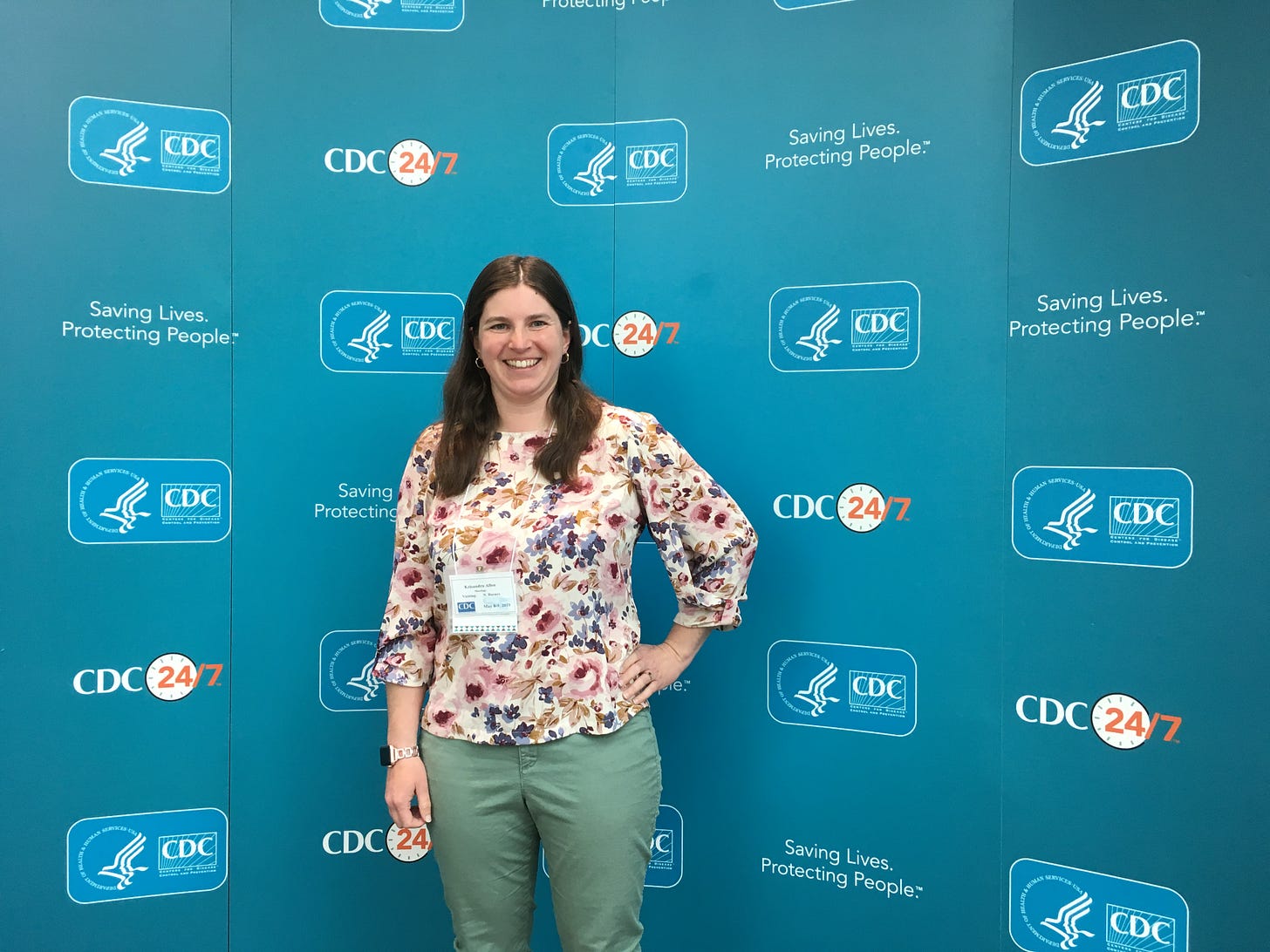My route to genomic epidemiology: summary
BS. Microbiology, MPH Epidemiology
Public health experience as an epidemiologist and molecular biologist
Spending a lot of time tagging along with and learning from bioinformaticians
My route to genomic epidemiology: the full story
There are many pathways to becoming a genomic epidemiologist, and for today I’ll start with one - my own! I started out as a failed mechanical engineering student. And by failed, I mean that after a semester and a half decided that was not the right course of study for me (statics - yuck!). After bouncing around majorless for a while, I took an introductory microbiology course, and I was hooked. It was the most fascinating and interesting class I had taken, and the labs were the highlight of my week.
After settling into my new microbiology major, I took the required statistics course and fell in love with statistics and added a minor (thank you Kirk Steinhorst for being a great introductory stats professor!). After graduation I worked for a year in a research lab studying Myxococcus xanthus, a soil bacteria that smells, well, like dirt. A lot better than many other organisms! It was a lot of fun, but after a year of growing and attempting (and failing) to crystallize a protein, I decided that epidemiology would be the best way to combine my love for pathogens and my love of statistics.
I completed my Master of Public Health in epidemiology and started my career as a District Epidemiologist for the Piedmont Health District in Virginia. That role gave me the true ‘shoe-leather’ epidemiology experience - interacting directly with patients, facilities, and healthcare providers, and ferrying specimens to the public health lab. From there I moved into a role at the state health department working in the foodborne disease epidemiology program. This role was tied very closely to the public health laboratory, as all isolates of enteric bacteria such as Salmonella, Listeria and E. coli were routinely subtyped by PFGE (this was before routine sequencing - yes, it was a while ago). Incorporating molecular data was a critical part of my job and I used it for tracking and investigating clusters and outbreaks of enteric diseases.
After working closely with the laboratory as an epidemiologist for several years, I made the jump from working in epidemiology back to the laboratory bench. I was nervous that I had forgotten how to pipette, but it turns out that it’s much like riding a bike the muscle memory quickly returned. I even managed to load a gel without poking through the bottom of the well, first try! I had many great opportunities in the public health laboratory, running diagnostics for norovirus and rotavirus, doing sequence-based genotyping for norovirus, and validating a new assay for enterovirus detection and subtyping.
Eventually I moved back to the epidemiology side, but always kept a close connection with what was happening in the laboratory and how I could better integrate their work into my own. I began using the NCBI pathogen detection portal to view sequencing data and use that to help inform my outbreak investigations and hypothesis generation. This reinforced the value of sequencing data and the critical role it should play in public health.
It was against this backdrop that the SARS-CoV-2 pandemic upended both the world, and my career. I was quickly repurposed from foodborne disease epidemiology to a multitude of pandemic response tasks. Most of these had nothing to do with sequencing or genomic epidemiology - such as starting a program at the department of health to use REDCap for a multitude of pandemic response data needs. The whole time I was on other duties, I kept raising the question of sequencing, and how we should be integrating SARS-CoV-2 sequencing into our response. In August of 2020, I officially became a molecular epidemiologist at the Washington State Department of Health and was able to focus full-time on molecular/genomic epidemiology efforts, which I worked on until early 2022.
In my current role I work as a genomic epidemiologist with a focus on helping agencies with their genomic epidemiology programs through training, advice, and software tools. I enjoy being able to work with nascent programs, and epidemiologists that are working to learn genomic epidemiology and incorporate it into their everyday activities.
Along my career journey, I spent time whenever I could hanging out with the public health bioinformaticians, listening and learning. I have attended the Association of Public Health Laboratories annual conference multiple times, and also the CDC AMD academy. I had the opportunity to attend a week-long bioinformatics course hosted by the Washington State Public Health Laboratories, which was an excellent opportunity to learn more theory as well as hand-on work with sequence data using both the command line and Galaxy. I am far from a bioinformatician, but always strive to keep learning and growing and try and get into any training courses and opportunities that I can find.
So, now you’re familiar with exactly one route to becoming a genomic epidemiologist! There are many other pathways through education, fellowships, and work experience if you’re interested in becoming a genomic epidemiologist. If you want to see what skills are in demand by employers of genomic epidemiologists, check out my job listing and archive at genomicepi.com/jobs. You can click through the pdf documents of all the job descriptions to see what education, experience, and skills are listed in the job advertisements.
If you’re a genomic epidemiologist and would like to share your story, reach out - I’d love to share other paths.




